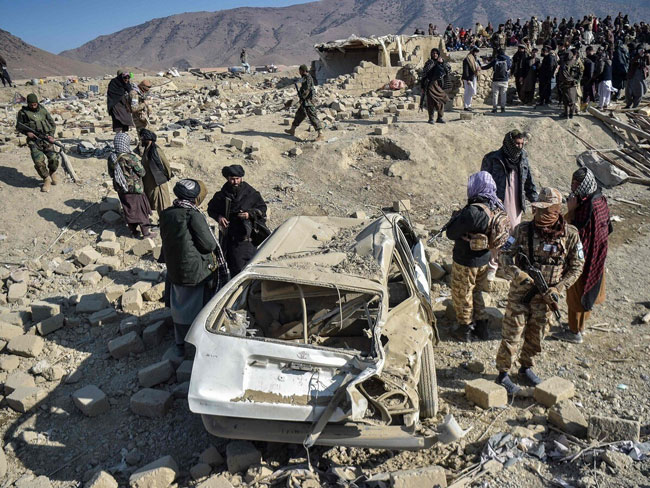Afghanistan’s Taliban-led government and Pakistan are embroiled in a heated conflict. The situation worsened following an airstrike by Pakistan that resulted in the loss of several Taliban fighters. Enraged by the attack, the Taliban launched a significant assault on the Afghan-Pak border this past Saturday. Reports indicate that Pakistan was forced to abandon two border posts, retreating under pressure. The Taliban claims the attack left around 19 Pakistani soldiers dead.
The current hostility marks a stark contrast to a time when both sides shared a cooperative relationship, reaching unprecedented heights. So, what led to this breakdown in ties between the Taliban and Pakistan?
A History of Cooperation
For nearly two decades, the Taliban resisted a coalition of over 40 nations led by the United States. During this time, Taliban leaders and fighters found refuge in Pakistan’s border regions, such as Quetta, Peshawar, and later Karachi. These safe havens not only provided shelter but also helped the Taliban regroup and launch their insurgency around 2003. Analysts believe the Taliban’s rebellion might not have succeeded without Pakistan’s assistance and sanctuary.
When the Taliban seized control of Kabul in August 2021, Pakistan’s Interior Minister Sheikh Rashid Ahmed described the event as the dawn of a new era. At the time, Pakistan’s then-Prime Minister Imran Khan likened the Taliban’s return to breaking free from the chains of slavery.
The Durand Line Dispute
The relationship between Afghanistan and Pakistan has always been complex. While Pakistan welcomed the Taliban in Kabul as a natural ally, the Taliban government has been less cooperative than Islamabad hoped. Transitioning from a militant group to a governing body, the Taliban continues to challenge Pakistan over the Durand Line—a border demarcated in 1893 and internationally recognized as the boundary between the two nations. Afghanistan has never formally accepted the Durand Line, and it remains a deeply emotional issue, dividing ethnic Pashtuns living on either side.
In the 1990s, the Taliban refused to recognize the Durand Line as a legitimate border, and the current regime has maintained the same stance. Pakistan, however, has fenced almost the entire border, citing security concerns, which has further fueled tensions.
Pakistan’s Demands and Taliban’s Resistance
Since the Taliban’s rise to power, militant activity in Pakistan’s border regions has surged, particularly in Khyber Pakhtunkhwa and Balochistan provinces. Most of these attacks have been claimed by the Tehreek-e-Taliban Pakistan (TTP), or the Pakistan Taliban. In response, Pakistan has repeatedly called on the Taliban to take action against TTP leaders based in Afghanistan.
However, the Taliban has shown reluctance to act against the TTP, fearing that such a move could destabilize their own fragile relationship with the group and empower rival extremist organizations like the Islamic State Khorasan Province (ISKP). Instead, the Taliban insists that the TTP is an internal Pakistani matter and urges Islamabad to address its issues domestically.
A Complicated Future
The deteriorating relations between Pakistan and the Taliban highlight the challenges of balancing regional security, historical grievances, and emerging geopolitical realities. What began as a strategic alliance has devolved into a conflict marked by mistrust and competing interests. As tensions rise, both nations face mounting pressure to address their issues before the situation spirals further out of control.




